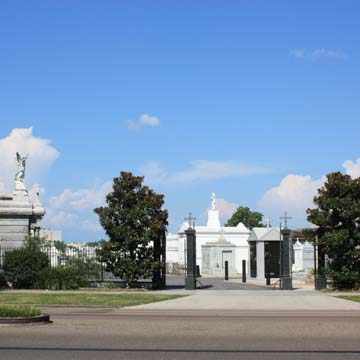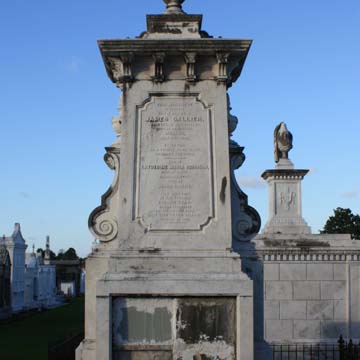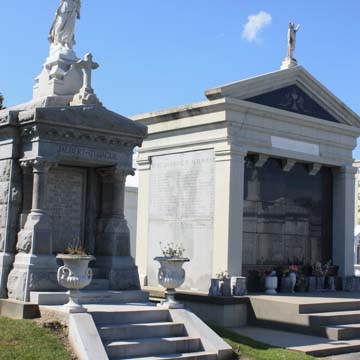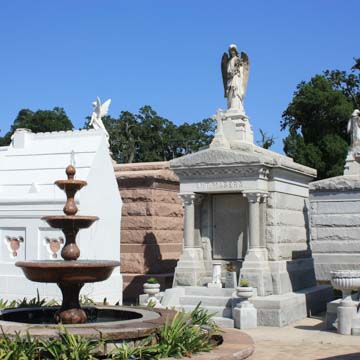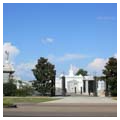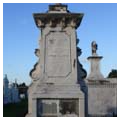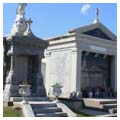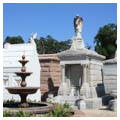This cemetery was laid out following the yellow fever epidemic of 1853, which killed 10 percent of the city’s population. First established with three main avenues and four narrower parallel aisles, the cemetery was enlarged and improved in 1865 by French-born surveyor Jules A. D’Hémécourt (1819–1880). By widening the central aisle and adding cross aisles, he provided grand vistas along the continuous rows of aboveground tombs. The uniform size and gable roofs of the tombs give this cemetery, more than any other in New Orleans, the appearance of city streets in miniature. Near the entrance is the monument that James Gallier Jr. designed in 1866 for his father, James Gallier Sr., who died at sea along with his wife, Catherine. It is a vertical composition of stacked pedestals surmounted by a large urn. Among the society tombs, those for the Slavonian Benevolent Society (1876) and the Hellenic Orthodox Community (1928) are particularly impressive; much simpler is the multivault tomb of the Little Sisters of the Poor, which was donated by philanthropist Margaret Haughery (OR128). Francis Lurges fabricated the elaborate iron entrance gates.
You are here
St. Louis Cemetery No. 3
If SAH Archipedia has been useful to you, please consider supporting it.
SAH Archipedia tells the story of the United States through its buildings, landscapes, and cities. This freely available resource empowers the public with authoritative knowledge that deepens their understanding and appreciation of the built environment. But the Society of Architectural Historians, which created SAH Archipedia with University of Virginia Press, needs your support to maintain the high-caliber research, writing, photography, cartography, editing, design, and programming that make SAH Archipedia a trusted online resource available to all who value the history of place, heritage tourism, and learning.







